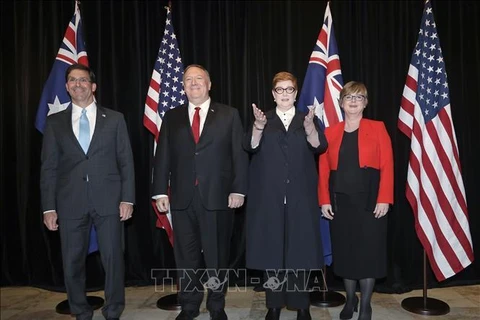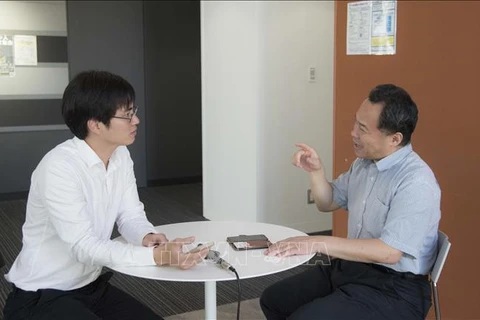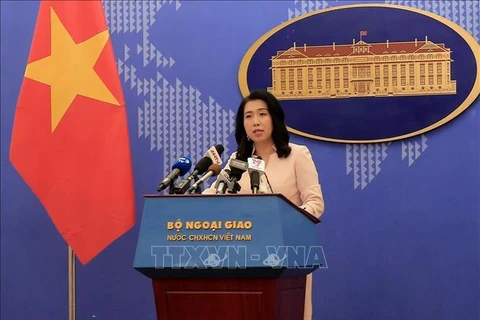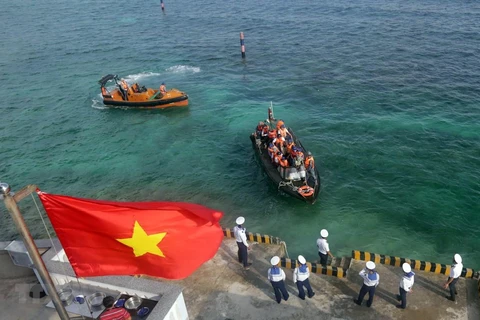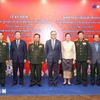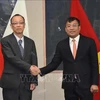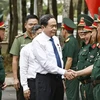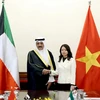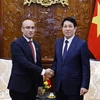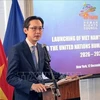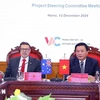Hanoi (VNA) - Vietnam has long been persistent and consistent in safeguarding its national sovereignty in the East Sea through peaceful measures on the basis of international law to maintain peace, stability, security and cooperation at sea for the legitimate interests of all parties.
Early during the Nguyen Dynasty (1802-1945), the feudal administration sent teams to Hoang Sa (Paracel) and Truong Sa (Spratly) archipelagoes to make surveys, plant landmarks and draw maps as well as rescue Vietnamese and foreign vessels in trouble in the waters.
During the dynasty, a Hoang Sa flotilla was formed and sent to Hoang Sa to exploit sea products on a yearly basis. In 1816, Nguyen Anh, or Gia Long King, ordered the erection of a flagpole affirming sovereignty over Hoang Sa.
Throughout history, sea and islands have always played an important role in national construction and defence. The Party and State of Vietnam has issued many policies and plans for maritime economic development, ensuring national defence and security, and safeguarding sovereignty, rights and jurisdiction of the country over seas and islands.
Resolution 09-NQ/TW on Vietnam maritime strategy towards 2020, which was issued on February 2, 2007, sets a target to make Vietnam a country strong of sea and rich from sea in line with ensuring national sovereignty at sea.
The introduction of the strategy was an important step forwards to help the country optimise the resources for the expansion of maritime economic sectors. Based on the strategy, the Government, sectors and localities have implemented many action programmes and specific projects to exploit maritime resources with fruitful results.
However, amidst complicated and unexpected developments in the region and the world, especially competition among world powers and disputes among coastal states, along with environmental pollution, climate change and sea level rises, Vietnam has issued a new resolution on sustainable maritime economic development towards 2030, with a vision to 2045.
The resolution clarified the goal of turning Vietnam into a strong coastal country; reaching criteria of sustainable maritime economic development; forming maritime ecologic culture; adapting to climate change and sea level rises; preventing maritime environmental pollution and degradation as well as coastal erosion and salinity; and recovering and preserving important maritime ecosystems.
It also defines new scientific and technology advances as direct factors promoting the sustainable growth of the maritime economy.
The East Sea has a strategic role and position for Vietnam, and is of interest to many countries. Development in the sea has become more complicated with escalating tension.
At the 34th ASEAN Summit in Bangkok in June, Prime Minister Nguyen Xuan Phuc highlighted the need to look into illegal land reinforcement and militarisation, the prevention of legal resource exploitation at sea, and even threats to thelives and property of fishermen.
Vietnam always encourages dialogue and cooperation, while staying straightforward and responsible to avoidthe developments that may harm the peaceful environment, security and stability in the region, he stated.
Additionally, at the recent 52nd ASEAN Foreign Ministers’ Meeting in Bangkok, Deputy PM and Foreign Minister Pham Binh Minh stressed the ASEAN principles on the East Sea and called on all parties to strengthen trust, not to conduct militarisation and actions complicating the situation and escalating tension, not to use or threaten to use force, and uphold and comply with international laws, including the 1982 United Nations Convention on the Law of the Sea (UNCLOS 1982), the Declaration on the Conduct of Parties in the East Sea (DOC), toward perfecting an effective Code of Conduct (COC).
Vietnam has remained persistent and consistent in dealing with East Sea disputes through peaceful measures on the basis of mutual understanding and respect, complying with international law, especially the UNCLOS 1982. Vietnam has strictly abided by the DOC and exerted efforts to create the COC.
In response to actions violating Vietnam’s waters, the Ministry of Foreign Affairs’ spokesperson has repeatedly affirmed: “Vietnam has sufficient legal foundation and historical evidence testifying to its sovereignty over Hoang Sa and Truong Sa archipelagoes.” The official has also clarified Vietnam’s consistent policy of resolutely persistently fighting, through peaceful measures in line with international law and the UNCLOS 1982, actions violating the sovereignty, sovereign rights and jurisdiction of Vietnam over waters defined by the UNCLOS 1982.
With a spirit of upholding law and a goodwill, Vietnam asks countries in the East Sea region to respect sovereignty and legitimate interest of states, and follow international law, especially the UNCLOS 1982, contributing to peace, security, stability and cooperation in the region.-VNA
VNA

